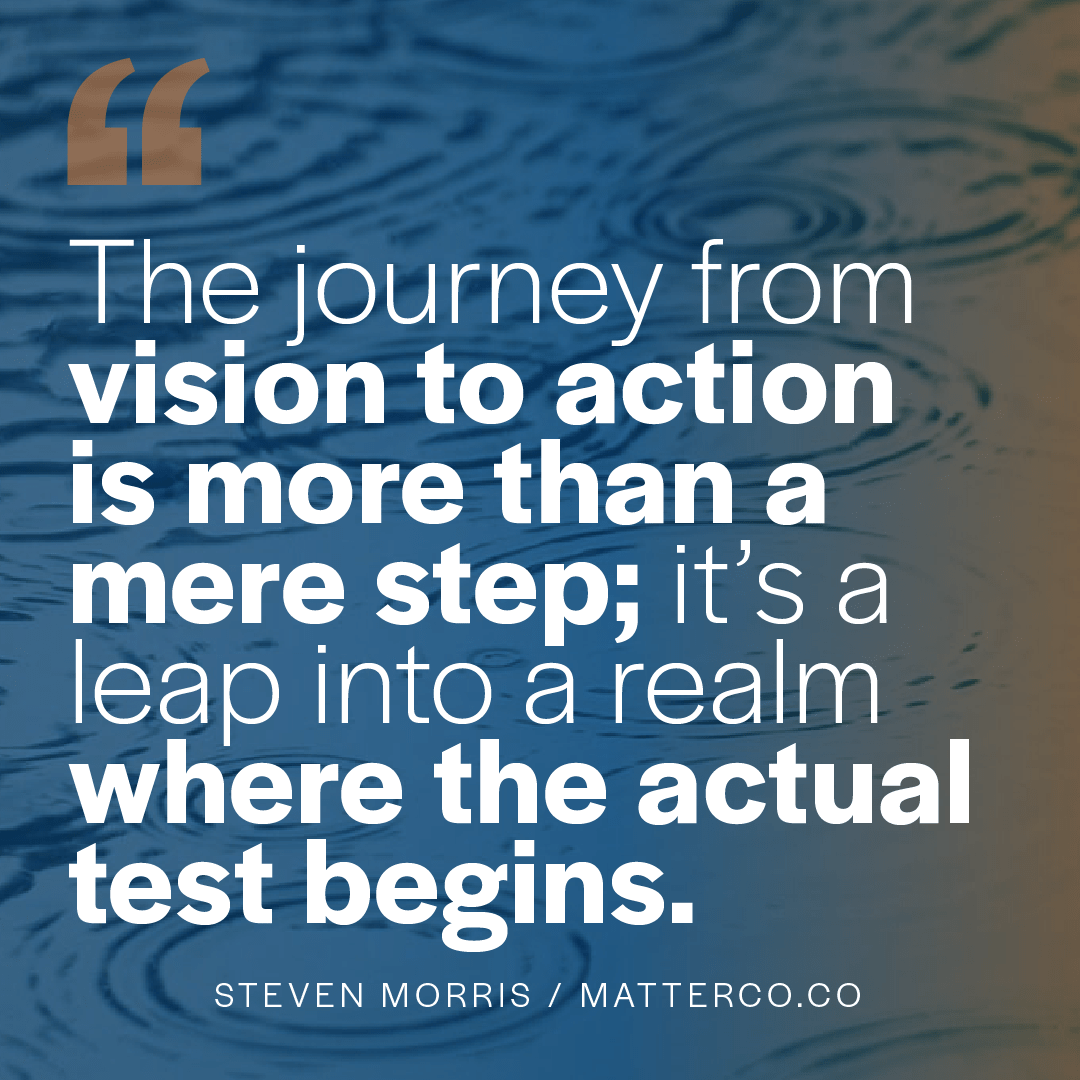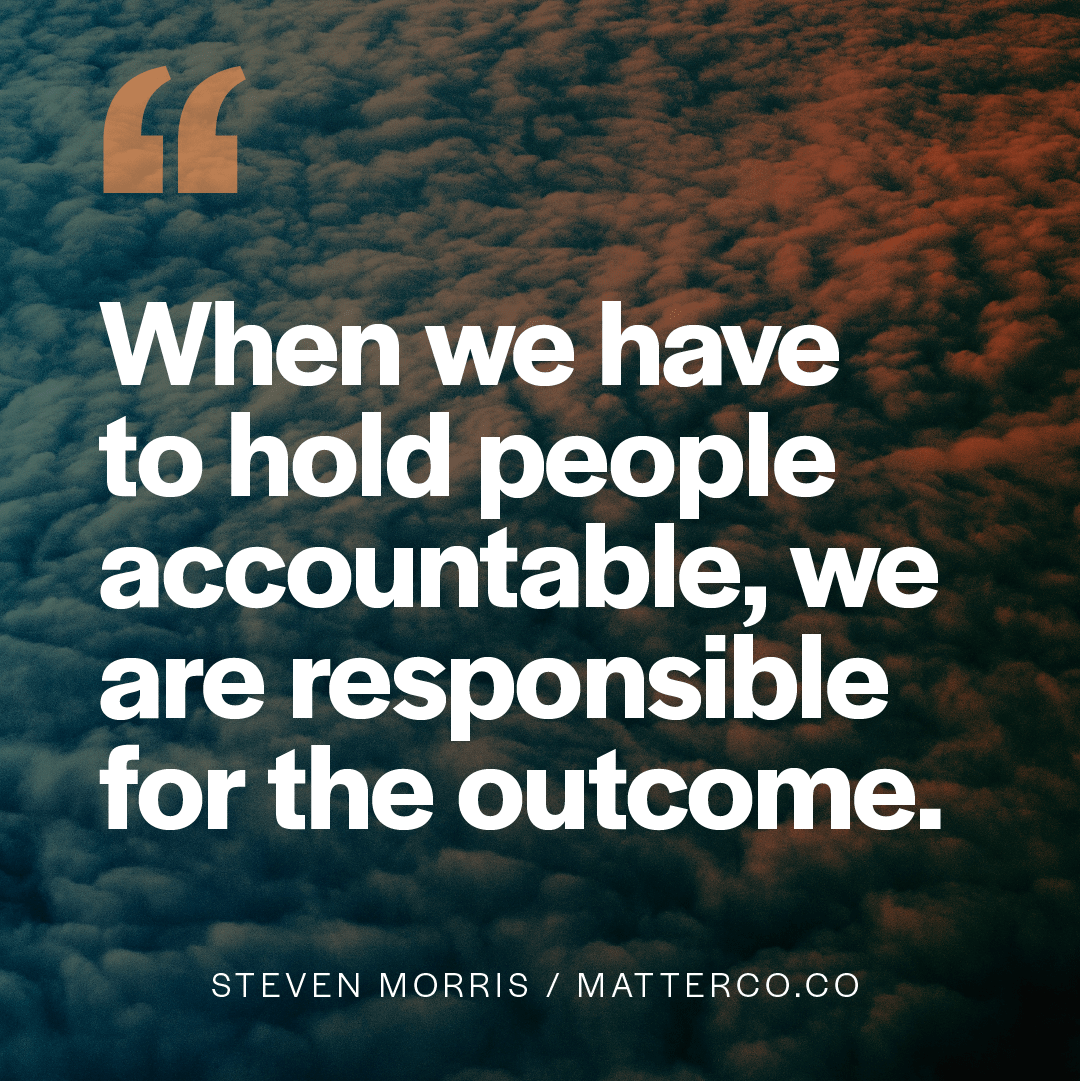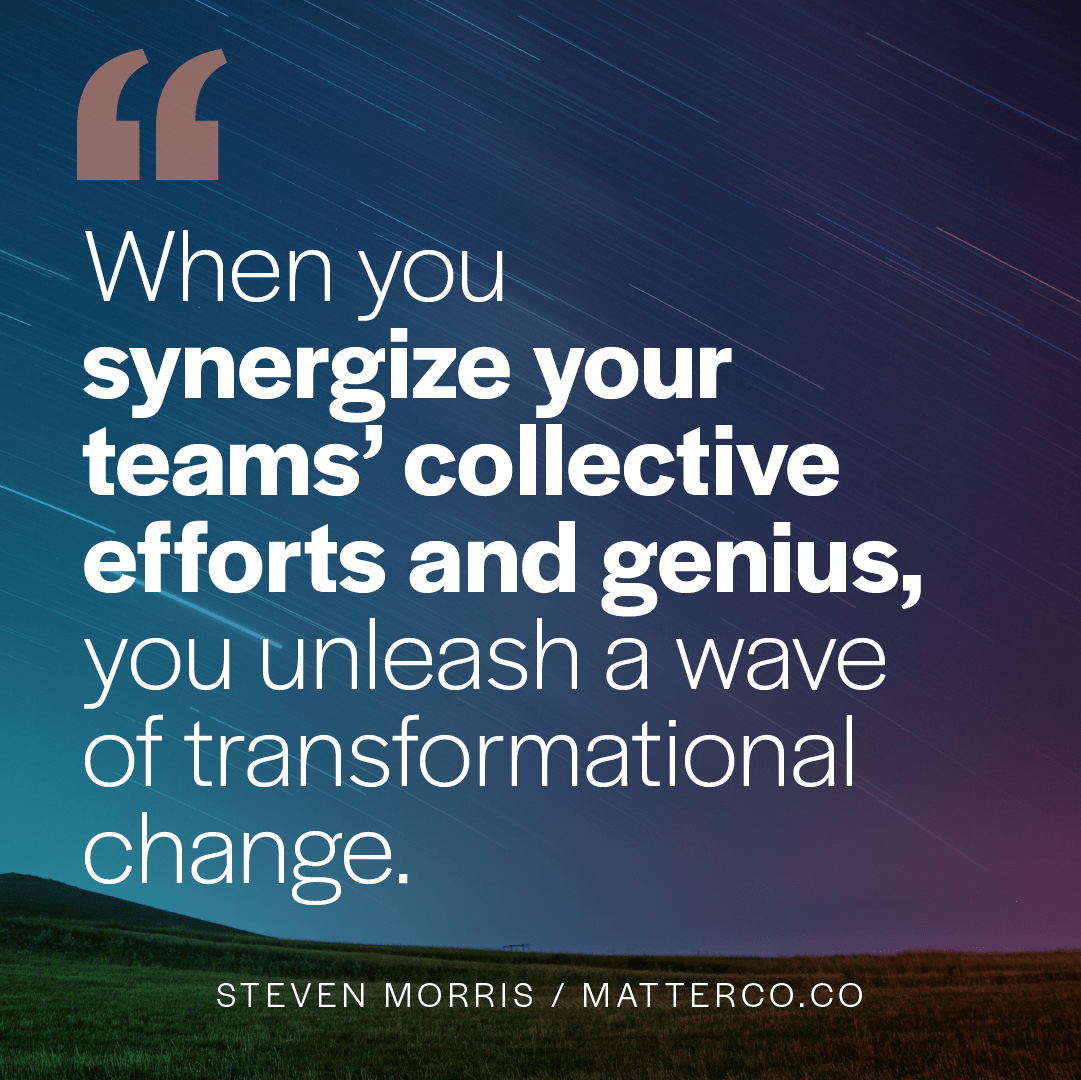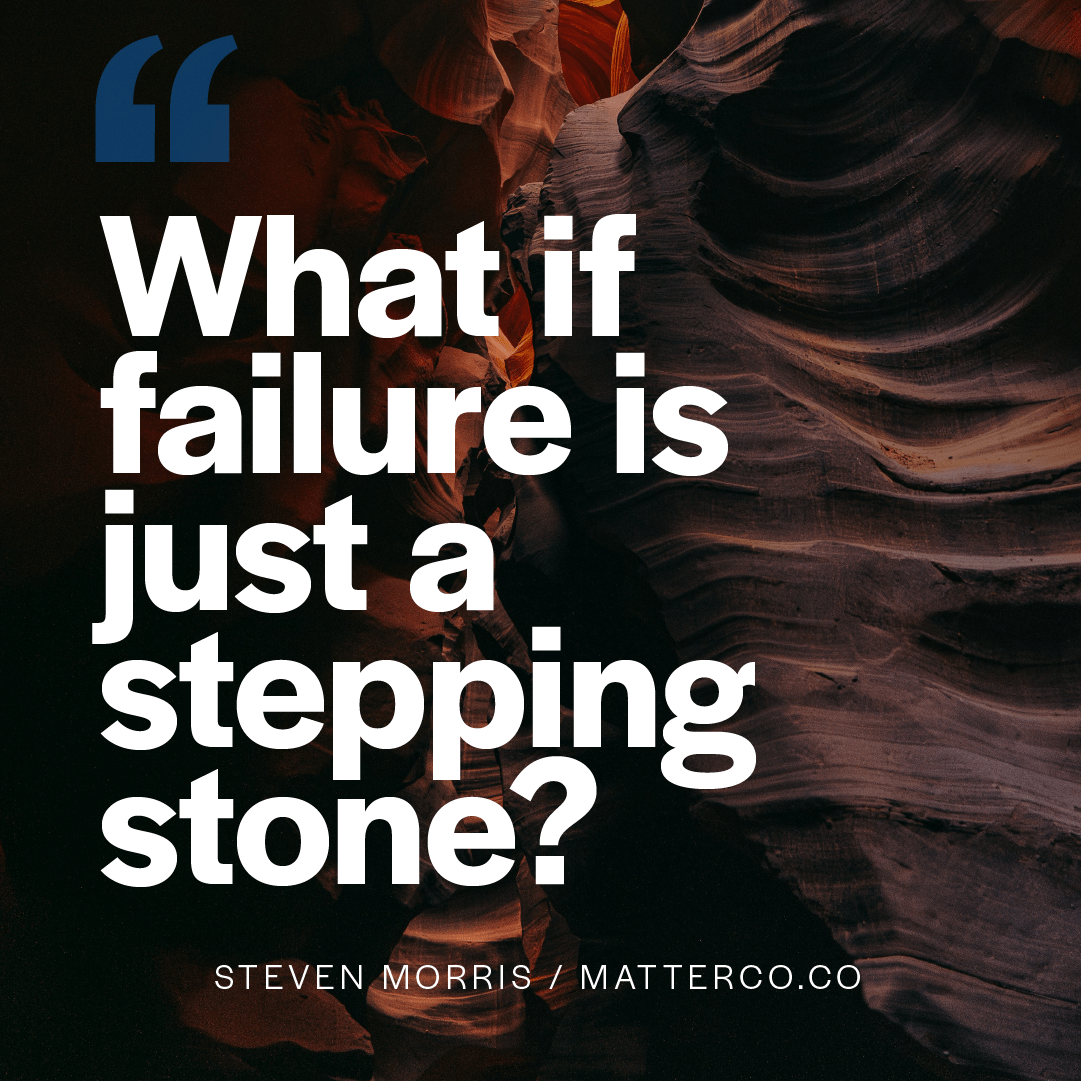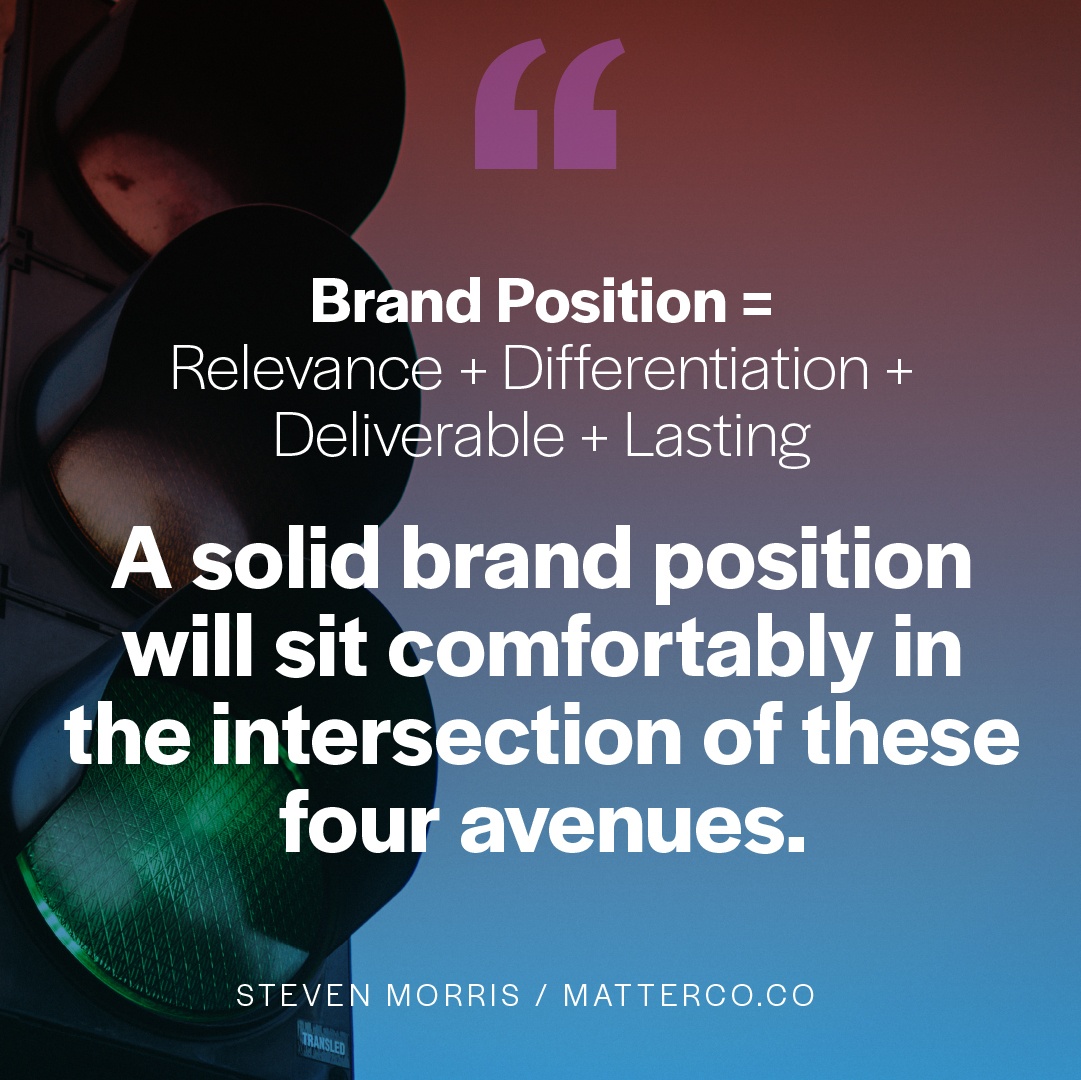
Succinct Positioning
With more options than ever, consumers don’t always have the time to get to know your brand. It is your job to be clear and concise about your brand offering. As a result, brands need to quickly and clearly present themselves to audiences. In order to help you clearly position your brand, we’ve created a few guiding questions.
Where do you live in the positioning intersection?
Brand position has four avenues:
- Relevance (to your customers; something they desire)
- Differentiation (from the competition)
- Deliverable (by your company)
- Lasting (over time)
A good brand position will sit comfortably at the intersection of these four requirements. The most important is relevance and differentiation. Without them, everything falls apart.
- What’s in it for them?
Too many times we’ve worked with clients who’ve insisted on using certain phrases in their positioning that make sense internally but not to customers. They’re so focused on features that they forget that customers care only about the benefits to them. To get yourself in a customer state of mind, write your positioning statements from a customer’s point of view. For example, “If I choose x instead of (alternative), I will get (what benefit) because (primary reason to believe).”
- Can you say it in five words or less?
See if you can write your own tagline that clearly captures the essence of your brand.
Hint: your tagline should also have your brand promise built-in. By the way, it’s not your copywriter’s job. He or she won’t be in the elevator or the line at Starbucks when someone asks you about your brand. If you can’t boil down the brand essence into a short, memorable phrase, chances are a copywriter can’t either. It’s not a quick and easy process, but it pays off in the long run.
Some companies live up to their well-articulated brand positions and rarely waver over time. Others struggle because they are not clear on what they’re selling. Some brands get stuck in the product mindset when branding. If you are an electronics company, you are always selling laptops, phones, and TVs. If you are a software company, you’re always in the world of software. A product or service-defined brand is inherently limiting.
SPY Optics, for example, is a top eyewear company, but what they really sell is emotion, specifically they sell “happy.” When thinking of your product or service ask two questions: 1) “What problem are we solving for our customers?” and, 2) “What emotion does that equate to in their lives?”
For the success of your brand follow the three rules above to determine where you want to be. Work your way forward using cultural alignment, operational improvements, and marketing tactics that—over time—coalesce into a lucid, memorable brand.
For a few related posts on brand positioning, see How Scarce is Your Brand? and Brand Questions that Have No Right to Go Away.
If you want a more trusting team, a culture of belonging or a magnetic brand that attracts more of the right customers, I can help. If you'd like to explore if working together makes sense, drop me a line.




